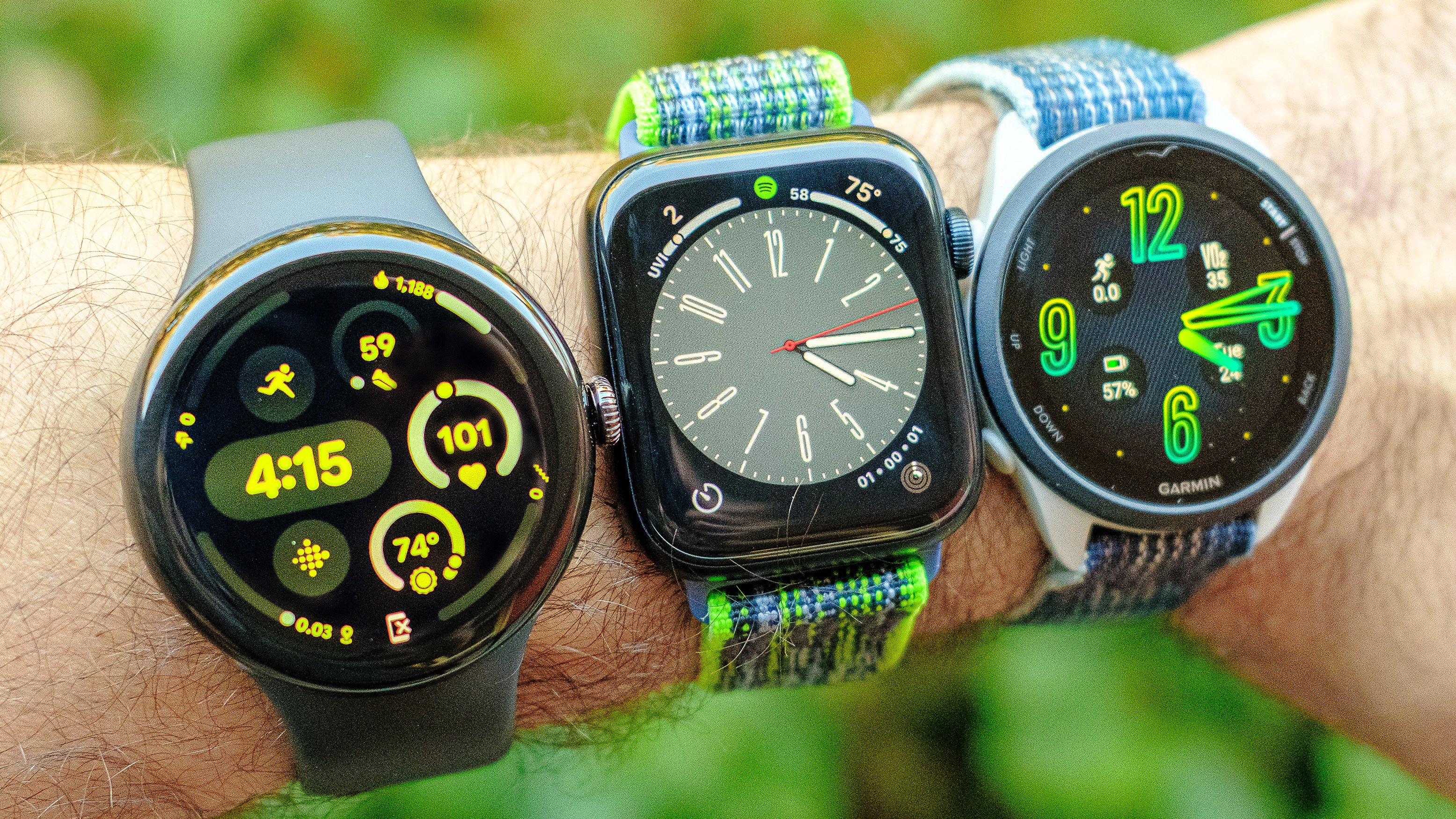
I recently had the privilege of taking on an epic mountain hike with two close pals visiting the U.S. Pacific Northwest from the decidedly less rugged and wild U.S. Northeast. To ensure a truly spectacular trek, I consulted my go-to hiking app, AllTrails to whittle down the selection
Within an hour of Seattle, there are hundreds of options to choose from, varying from very easy to extremely difficult. I ultimately settled on Snow Lake Trail, a roughly seven-mile out-and-back trek with breathtaking views and a stunning alpine lake as your reward for climbing up 1,700+ feet of elevation.
To make the hike even more fun, I let my homies Aymann and Mike have their pick of any one of the 20+ smartwatches currently sitting on my desk drawer to wear for the duration of our adventure.

Mike opted for the Garmin Forerunner 165, the best Garmin for hikes. Aymann, meanwhile, took the 45mm Google Pixel Watch 3 for a spin. As an owner of an older generation Apple Watch, he was curious to see how one of the best smartwatches for Android compares.
With my Apple Watch 10 review unit still a day away from delivery, I chose the Apple Watch SE 2022 running the latest watchOS 11 software. With our bags filled to the brim with water, extra layers and bagel sandwiches, we synchronized our watches and started our ascent.
Ultimately, our journey lasted more than six hours and resulted in us exploring well beyond our initial destination. Once safely back at my apartment, I sat down and compared the data. Here's what I learned from hiking roughly nine miles with the Apple Watch SE, Google Pixel Watch 3 and Garmin Forerunner 165.
1. Apple recorded the least distance
All three smartwatch models calculated our total distance covered as somewhere between 8.5 and 8.75 miles with the Apple Watch being the least generous. What was our actual total mileage and which watch was closest? We'll never know. But less than a quarter mile of variation between the contenders is pretty darn impressive.
2. Apple also recorded 100 less feet of elevation gain
There was more variation in ascent data with Apple measuring our total climb as roughly one hundred feet less than the other two devices. As someone who does a lot of hiking and biking in and around the mountains, elevation gain is a metric I value even more than distance, which is to say, I suspect the Apple Watch SE shortchanged our adventure by just a bit.
3. Garmin and Google had similar ascent data

Adding fuel to my above gut instincts, the Garmin Forerunner 165 and Google Pixel Watch 3 measured nearly the same amount of total ascent for the hike with only six feet separating their tallies. From my experience, whether biking, hiking or snowboarding, Garmin watches tend to be extremely accurate in their elevation data and this suggests that the latest Pixel Watch 3 is too.
4. Battery life wasn't an issue for any model
Aymann's ancient Apple Watch — model unknown — worn on the other wrist was the only device that didn't survive our adventure. GPS tracking is a notorious suck on battery life but all three models remained well above 50% battery when all was said and done, which tells me that any one of these watches would be a good option for even the lengthiest day hike.
5. Comparing metrics on the go is fun

One of my favorite memories from my weekend adventure with the guys was comparing our stats while on the go, whether it be our current heart rates, total elevation gain or distance covered. All three devices make it easy to see this information at a glance while recording a hike. And because they all also sport reasonably bright OLED screens, pertinent details are still viewable even in direct sunlight.
Ultimately, the Apple Watch SE (2002), Google Pixel Watch 3 and Garmin Forerunner 165 are all excellent choices for keeping tabs on all the most important details of your next nature adventure.
I'm now looking forward to trying this challenge again, this time wearing the Apple Watch Series 10 on one wrist and either the Pixel Watch 3 or Garmin Forerunner 165 on the other. Stay tuned for those results.







